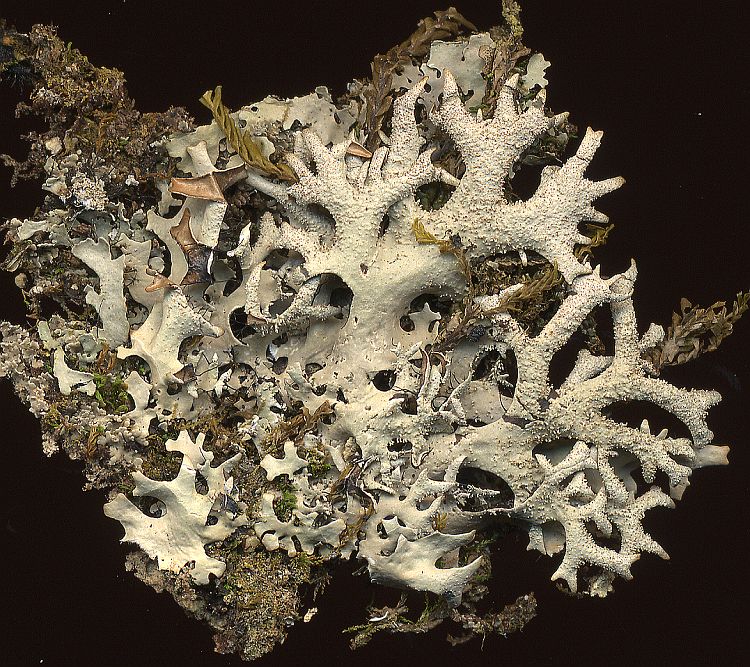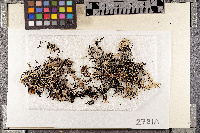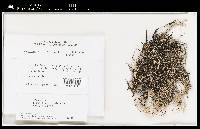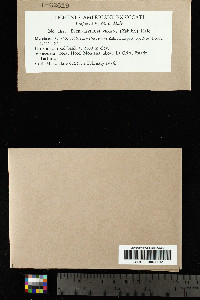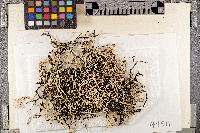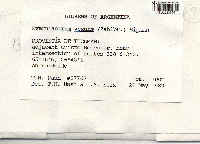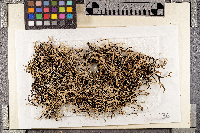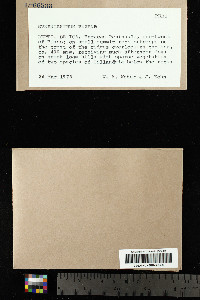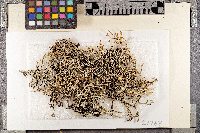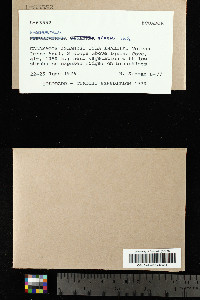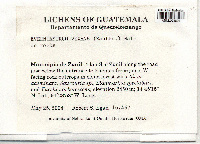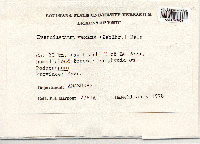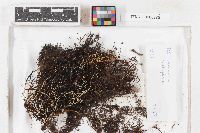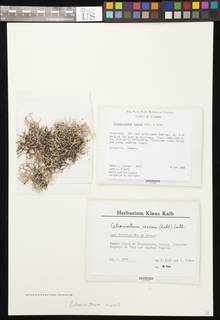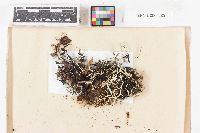
Consortium of Lichen Herbaria
- building a Global Consortium of Bryophytes and Lichens as keystones of cryptobiotic communities -
- Home
- Search
- Images
- Species Checklists
- US States: O-Z >
- US National Parks
- Central America
- South America
- US National Parks
- Southern Subpolar Region
|
Hypotrachyna vexans (Zahlbr. ex W.L. Culb. & C.F. Culb.) Divakar, A. Crespo, Sipman, Elix & Lumbsch
 (redirected from: Parmelia vexans Zahlbr. nom. inval.) (redirected from: Parmelia vexans Zahlbr. nom. inval.) |
|
|
Family: Parmeliaceae
[Cetrariastrum vexans Zahlbr. ex W.L. Culb. & C. F. Culb., moreEverniastrum vexans (Zahlbr. ex W.L. Culb. & C.F. Culb.) Hale ex Sipman, Parmelia vexans Zahlbr. nom. inval.] |
Nash, T.H., Ryan, B.D., Gries, C., Bungartz, F., (eds.) 2002. Lichen Flora of the Greater Sonoran Desert Region. Vol 1. Thallus: foliose to subcaespitose, very loosely adnate, up to 12 (exceptionally to 17) cm across, dichotomously or subdichotomously lobate lobes: 0.5-2 (-4) mm broad, divided, strongly to moderately involute or flat; apices: ciliate; cilia: abundant, up to 4 (-6) mm long, simple or branched upper surface: pale gray to gray; slightly to densely isidiate isidia: up to 1 mm, often bearing a lateral (rarely terminal) black hairs [0.2-0.5 (-2) mm long] lower surface: black, brown- or pale-colored at the tips, usually naked but with a few short, usually simple, black rhizines in some specimens Apothecia: very rare, up to 6 mm diam. asci: clavate, 8-spored ascospores: ellipsoid, 12-13 x (5-) 6-8 µm Pycnidia: rare, 0.1-0.2 mm diam., immersed conidia: bacilliform, straight, c. 5-7 x 1 µm Spot tests: upper cortex K+ yellow, C-, KC-, P+ yellow; medulla K+ yellow then red, C-, P+ yellow then orange Secondary metabolites: cortex with atranorin and chloroatranorin, medulla with salazinic acid (major), consalazinic acid (minor), galbinic and norstictic acids (accessory) and a fatty acid. Substrate and ecology: on trees and shrubs, rarely rocks in montane forests World distribution: pansubtropical and extending into adjacent subtropical regions, particularly in the mountains Sonoran distribution: Sierra Madre Occidental of Sinaloa. |
|
|
|
Powered by Symbiota
